 W
WBalneotherapy is a method of treating diseases by bathing, a traditional medicine technique usually practiced at spas. While it is considered distinct from hydrotherapy, there are some overlaps in practice and in underlying principles. Balneotherapy may involve hot or cold water, massage through moving water, relaxation, or stimulation. Many mineral waters at spas are rich in particular minerals such as silica, sulfur, selenium, and radium. Medicinal clays are also widely used, a practice known as 'fangotherapy'.
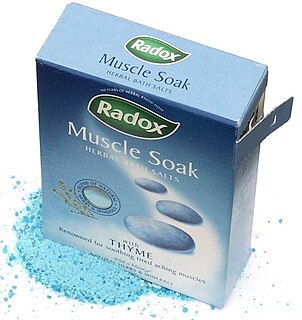 W
WBath salts are water-soluble, pulverized minerals that are added to water to be used for bathing. They are said to improve cleaning, enhance the enjoyment of bathing, and serve as a vehicle for cosmetic agents. Bath salts have been developed which mimic the properties of natural mineral baths or hot springs. Some bath salts contain glycerine so the product will act as an emollient, humectant, or lubricant. Fragrances and colors are often added to bath salts; the fragrances are used to increase the users' enjoyment of the bathing experience.
 W
WEugeniusz Budzyński was a Polish balneologist, neurologist, internist and major in the Polish Army. He was killed in the Katyn massacre.
 W
WBurnas Lagoon is a marine lagoon, located in southern Ukraine in Tatarbunary Raion of Odessa Oblast. The salinity of the lagoon is two times higher than in the Black Sea. The lagoon is connected to the sea via a system of canals. The lagoon is about 7 km long and 1–3 km wide. In the northern part the lagoon is connected to the lagoon Solone Ozero, in the north west to the Kurudiol Lagoon. The source of the lagoon water is the Black Sea and the river Alkaliya, which inflows to the lagoon Solone Ozero.
 W
WCalistoga Spa Hot Springs is a geothermal mineral water resort located in the upper Napa Valley town of Calistoga, California. The resort has been continuously operated as a hot spring resort since the early 1900s. The Calistoga Spa Hot Springs is located at 1006 Washington Street and bordered by Gerard Street to the Northwest and Franklin Street to the Southeast.
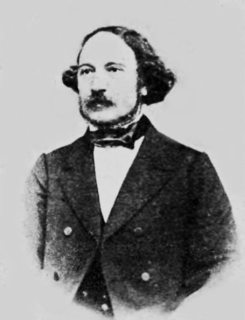 W
WAnastasie Fătu was a Moldavian and Romanian physician, naturalist, philanthropist and political figure, a titular member of the Romanian Academy and founder of Iași's Botanical Garden. Of lowly origins, he benefited from the meritocratic program instituted by Moldavia's government in the 1830s, and went on to study law at the University of Vienna, with hopes of becoming a political economist. After graduating, he changed his professional path, and trained in medicine at the University of Paris. Recognized for pioneering contributions in cardiology, pediatrics, obstetrics and balneotherapy, he was also an early speaker for public health and social medicine, as well as an educational theorist and textbook author. Fătu's career as a professor of natural sciences took him to the Gregorian Institute, the Socola Monastery school, and ultimately Iași University, where he took steps to create a regional medical school.
 W
WVictor Gomoiu was a Romanian surgeon, anatomist, folklorist and medical historian, who served as Minister of Health and Social Protection in 1940. Noted before 1910 for his work in descriptive surgery and pathology, focusing on the treatment of tuberculosis, genital diseases and tumors, he soon became one of the main contributors to medical historiography and bibliography. He founded several hospitals and edited medical journals, setting up a collection of medical instruments which became the basis of a national museum in Craiova. He became a professor at the University of Bucharest, an expert for the League of Nations, and, after distinguished service in World War I, a recipient of the Legion of Honor; additionally, he served for 22 years as president of the International Society for the History of Medicine, of which his wife Viorica was also an active member.
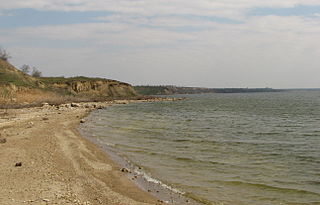 W
WKhadzhibey Estuary, or Khadzhibeyskyi Liman, is an estuary of the north-western part of the Black Sea, located on the north-west from the City of Odessa. It is named after the former Khadzhibey fortress.
 W
WKuialnyk Estuary Kuyagnyk formerly the Andriyivsky Liman is an estuary of the Velykyi Kuialnyk on the northwest coast of the Black Sea, one of the group of Odessa estuaries, located north of Odessa.
 W
WJosef Wilhelm Freiherr von Löschner or in Czech Josef Vilém z Löschneru was an Austrian physician born in Kaaden, Bohemia. He studied at Gymnasium Kadaň.
 W
WMineral spas are spa resorts developed around naturally occurring mineral springs. Like seaside resorts, they are mainly used recreationally although they also figured prominently in prescientific medicine.
 W
WEmil Osann was a German physician and physiologist from Weimar. He was a founder of scientific balneology.
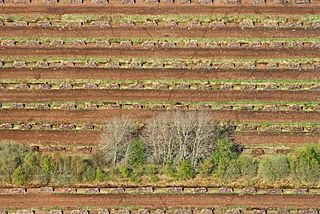 W
WPeat, sometimes known as turf, is an accumulation of partially decayed vegetation or organic matter. It is unique to natural areas called peatlands, bogs, mires, moors, or muskegs. The peatland ecosystem covers 3.7 million square kilometres (1.4 million square miles) and is the most efficient carbon sink on the planet, because peatland plants capture CO2 naturally released from the peat, maintaining an equilibrium. In natural peatlands, the "annual rate of biomass production is greater than the rate of decomposition", but it takes "thousands of years for peatlands to develop the deposits of 1.5 to 2.3 m [4.9 to 7.5 ft], which is the average depth of the boreal [northern] peatlands", which store around 415 gigatonnes (457 billion short tons; 408 billion long tons) of carbon (about 46 times 2019 global CO2 emissions). Globally, it even stores up to 550 gigatonnes (610 billion short tons; 540 billion long tons) of carbon, representing 42% of all soil carbon and exceeds the carbon stored in all other vegetation types, including the world's forests. Across the world, peat covers just 3% of the land’s surface, but stores one-third of the Earth’s soil carbon. Sphagnum moss, also called peat moss, is one of the most common components in peat, although many other plants can contribute. The biological features of sphagnum mosses act to create a habitat aiding peat formation, a phenomenon termed 'habitat manipulation'. Soils consisting primarily of peat are known as histosols. Peat forms in wetland conditions, where flooding or stagnant water obstructs the flow of oxygen from the atmosphere, slowing the rate of decomposition.
 W
WA peat pulp bath is a bath prepared of peat pulp from wetlands. Balneotherapy in form of peat pulp baths is offered in many health resorts.
 W
WPeloid is mud, or clay used therapeutically, as part of balneotherapy, or therapeutic bathing. Peloids consist of humus and minerals formed over many years by geological and biological, chemical and physical processes.
 W
WSapareva Banya is a town in southwestern Bulgaria, part of Kyustendil Province. As Ancient Germania, a former bishopric, it is a Latin Catholic titular see.
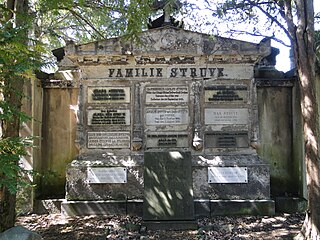 W
WFriedrich Adolph August Struve was a German pharmacist and balneologist.
 W
WHeinrich Arnold Thaulow was a physician known for the introduction of balneotherapy in Norway.